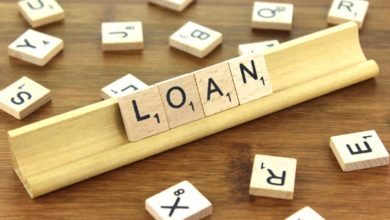What is a Bridge Loan and How Does a Bridge Loan Work?

If you’re in the market for a new home, consider a bridge loan. How does a bridge loan work? It will help you buy a new home before selling your current one.
You may have heard the term “bridge loan” bandied about when it comes to wheeling and dealing on big real estate purchases. But did you know that you can get a bridge loan for your home, too?
Neither did I, and now I’m kicking myself for turning down dream jobs because I didn’t think I could buy a new home in another city without selling my current one. So now I’m wondering, how does a bridge loan work if another opportunity comes my way?
Can you really get a home loan without selling your current residence?
How Does a Bridge Loan Work?
If you’ve never even heard the term before, you may be asking, “What is a bridge loan?”
The word “bridge” is applicable here because a bridge loan is a short-term loan meant to bridge the gap between two mortgages.
Bridge loans are more common in the business world when a company requires a short-term loan to purchase an asset while waiting for financing.
Bridge loans are also used for investment real estate. Those who purchase and flip properties for profit often get a bridge loan to finance the purchase and repairs, rather than a long-term mortgage.
In many business scenarios, the interest may be easily recovered once the asset is sold.
How Does a Bridge Loan Work for Home Financing?
Let’s say you got that dream job offer in Seattle, but you know you can’t sell your home in Cleveland until next spring. Problem is, you need to move this fall.
With residential bridge loans for a new residence, you’re borrowing on the equity in your old home to secure the loan. So, a bridge loan allows you to leverage that equity before it’s been cashed out in a sale.
Benefits of a Bridge Mortgage
One of the most distinct advantages is that the borrowing limits of a bridge loan mortgage are generally 80 percent of the combined value of the two homes. So, if your old home is valued for $225K, and the new home price is listed for $200K, you’ll be able to borrow up to $340,000.
This gives you flexibility in the offer as well as covering any renovations. Then, you can get conventional financing on the improved worth of the home.
It also allows you to make a quick-close offer no contingencies on the new home. Sellers prefer offers without contingencies since it permits the buyer to back out of a deal without repercussions if they can’t get financing.
Downsides to Bridge Loans
Bridge loans come with higher interest rates and upfront fees than conventional financing. Your lender makes money over the life of the loan on interest, so the shorter the loan, the less money they make unless they raise the fees and interest.
You’ll also be limited by the equity in your current home since the lender uses it as collateral for the bridge loan. You’ll need at least 20 percent to qualify.
Risky Business?
Terms for paying off your bridge loan can vary, but normally you’ll get a balloon payment at the end of the term. If you don’t sell your old home, you’ll still need to pay off the bridge loan or risk ownership of the property.
So, if you’re wondering how does a bridge loan work, and feel it may not be worth the risk, do your research and find the best terms on offer. It may be that a once-in-a-lifetime opportunity is worth the risk.






